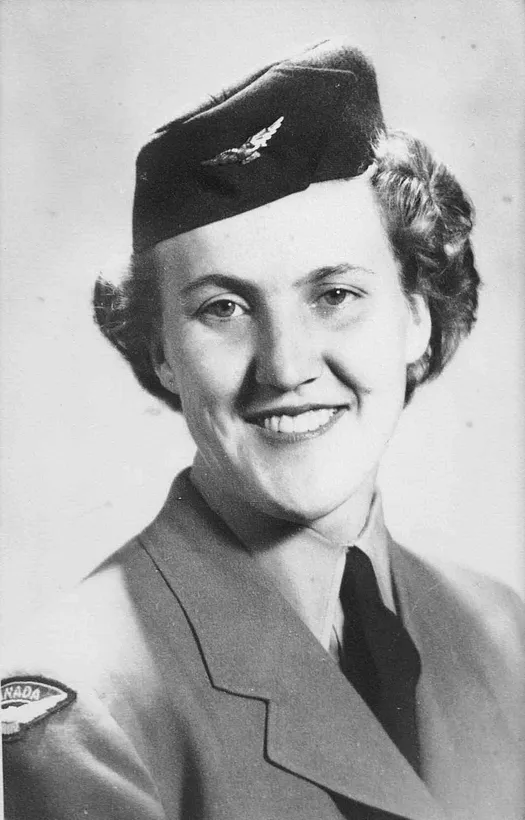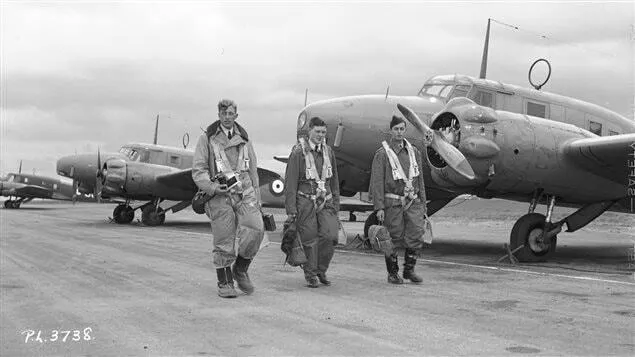Moody, Joan Mildred (Aircraftwoman Class I)
Killed in Flying Accident 1953-October-09


Birth Date: 1930-June-27
Born: Morris, Manitoba
Parents: Daughter of Frederick Lewis Moody and Miriam Clark. Sister of Georgina Mary and Nancy Mavis Moody.
Spouse:
Home: Morris, Manitoba
Enlistment: Winnipeg, Manitoba
Enlistment Date: 1952-February-22
Service
RCAF
Unit
1 ANS- Air Navigation School
Base
Summerside - RCAF Station
Rank
Aircraftwoman Class I
Position
Passenger
Service Numbers
44597W
Expeditor serial: 1580

Beechcraft CT-128 Expeditor Mk. 3TM (Serial No. A-734), (Serial No. CA-134), RCAF (Serial No. 1534), coded AO-N, Air Transport Command.
The Beechcraft Model 18 (or "Twin Beech", as it is also known) is a 6- to 11-seat, twin-engined, low-wing, tailwheel light aircraft manufactured by the Beech Aircraft Corporation of Wichita, Kansas. Continuously produced from 1937 to November 1969 (over 32 years, a world record at the time), over 9,000 were built, making it one of the world's most widely used light aircraft. Sold worldwide as a civilian executive, utility, cargo aircraft, and passenger airliner on tailwheels, nosewheels, skis, or floats, it was also used as a military aircraft.
During and after World War II, over 4,500 Beech 18s were used in military service "“ as light transport, light bomber (for China), aircrew trainer (for bombing, navigation, and gunnery), photo-reconnaissance, and "mother ship" for target drones "“ including Royal Canadian Airforce (RCAF), United States Army Air Forces (USAAF) C-45 Expeditor, AT-7 Navigator, and AT-11 Kansan; and United States Navy (USN) UC-45J Navigator, SNB-1 Kansan, and others. In World War II, over 90% of USAAF bombardiers and navigators and pilots trained in these aircraft.
In the early postwar era, the Beech 18 was the pre-eminent "business aircraft" and "feeder airliner". Besides carrying passengers, its civilian uses have included aerial spraying, sterile insect release, fish stocking, dry-ice cloud seeding, aerial firefighting, air-mail delivery, ambulance service, numerous movie productions, skydiving, freight, weapon- and drug-smuggling, engine testbed, skywriting, banner towing, and stunt aircraft. Wikipedia
Unit Desciption
1 ANS (1 Air Navigation School)
Nos. 1 & 2 Air Navigation Schools offered four-week courses in astronavigation and were the last step for Air Observers.
The RAF schools, Nos. 31, 32, and 33, provided the same training as Air Observer Schools.

RCAF.info - RCAF Station Trenton ON
NO1 ANS moved to Rivers Manitoba 23 November 1940
RCAF.info - RCAF Station Rivers MB
NO 1 ANS was redesignated Central Navigation School after an amalgamation with NO 2 ANS from Pennfield Ridge, NB May 11 1942
Project 44 BCATP